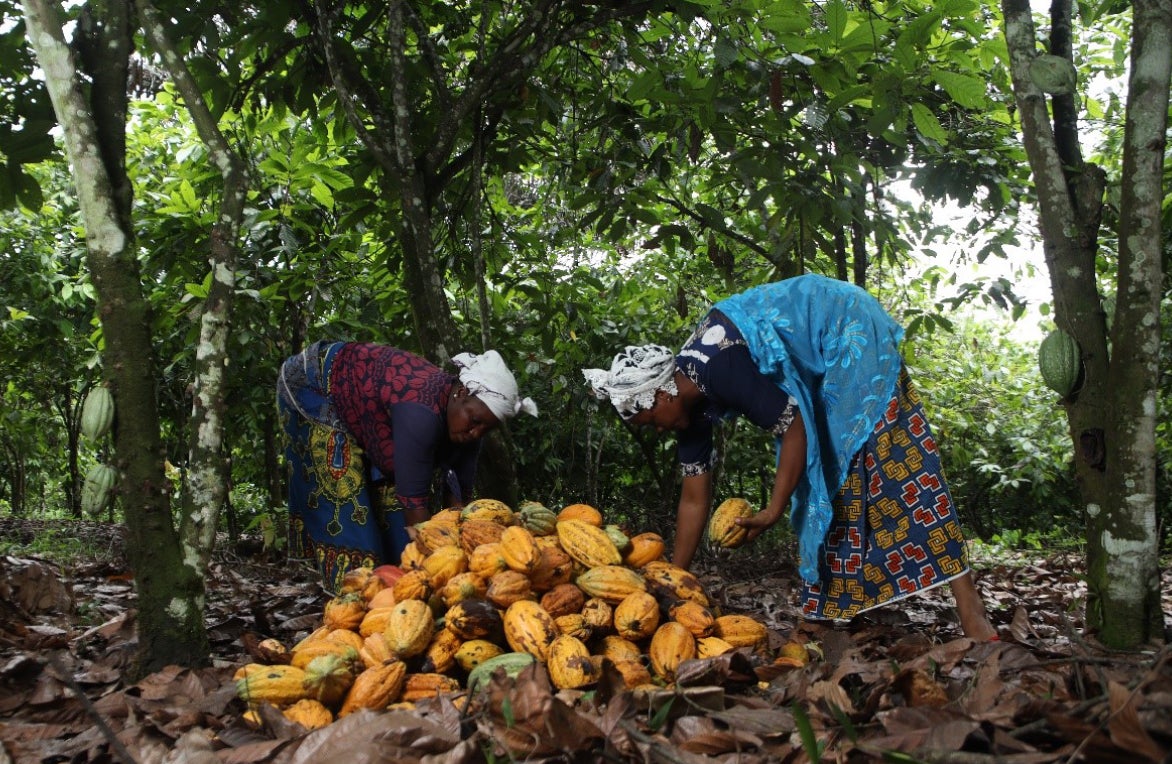 Higher productivity can shape the future of Côte d’Ivoire’s growth
Higher productivity can shape the future of Côte d’Ivoire’s growth
Productivity is the ultimate driver of economic growth. Almost half of the difference in per capita income across countries is explained by differences in total factor productivity (TFP). The creation of higher productivity jobs is central to achieve sustained inclusive growth in sub-Saharan Africa (SSA) as countries face the challenge of progressing along the income per capita ladder and reaping demographic dividends, with millions of youths entering the labor force.
How can countries achieve this? A recent World Bank Country Economic Memorandum (CEM), Sustaining the Growth Acceleration, asks this question for Côte d’Ivoire. As the country envisions to double its GDP per capita by 2030, how can the recent growth acceleration - dubbed “the second Ivorian miracle”- be sustained?
Job creation needs to happen in higher productivity sectors
TFP has recently been a driver of growth in Côte d’Ivoire: it contributed 3.7 percentage points (ppts) to growth in 2012-18, compared to -0.2 ppts in the previous decade. However, gains partly reflect improved use of existing capital in the post-crisis period (IMF 2016), and its contribution to growth has declined since 2015. Labor productivity has exhibited a similar trend. On average, since 2012 it has increased faster than for regional peers, but it remains below the levels of the 1970s and its growth rate has also decelerated since 2015.
These trends reflect the limited changes in the structure of the Ivorian economy, despite considerable shifts in sectoral employment in the last decade. Agriculture’s share of total employment fell from 60 percent in 2008 to about 48 percent in 2018. However, the bulk of labor shed by agriculture moved to low-productivity activities. In fact, labor productivity levels are the lowest in agriculture and informal commerce, where most employment is. In contrast, the structure of output has only slowly changed: if the share of services has increased, that of agriculture remains large and manufacturing has declined.
Improving the efficient use of resources is central to boost productivity
Ivorian firm level dynamics in services and manufacturing suggest most of the productivity gains have been intra-sectoral gains as opposed to across sectors or firms. This trend implies that: (1) allocative inefficiencies may be preventing resources from flowing from less productive to more productive firms ; or/and that they might result from (2) differences in technology, quality, markups, and different levels of experimentation. The CEM finds that non-manufacturing sectors have the greatest scope for improving productivity by reallocation. For example, in the retail sector, reallocation could increase productivity by up to 200 percent. Removing distortions that limit firms’ growth also appears crucial as most surviving new firms display weak employment growth after entry.
Correa, Cusolito and Pena (2019) show that, in developing economies, improving product market competition may contribute the most to reducing allocative inefficiencies. Yet, competition is perceived as weak in Ivorian markets. There is a relatively high perceived level of operational business risk related to the lack of a level playing field, a perception that has not changed over the past five years. According to the WEF Global Competitiveness Report, Côte d’Ivoire ranked 106th out of 140 countries in terms of the perceived extent of market dominance.
Increasing agricultural productivity remains a priority to lift people out of poverty
Improving agricultural productivity is key to promoting inclusive growth and accelerating poverty reduction. Overall, the country’s labor-intensive farming model with limited capital endowments and use of technology is not efficient. The CEM finds that labor productivity is much higher in non-agricultural jobs in urban areas, and, within agriculture, the more productive households are ten times as productive as the less productive ones. Education levels are lower in rural areas, hampering farmers’ ability to handle the growing complexity of agricultural production and marketing, particularly given the threat of climate change. While research capacity has expanded, spending on agricultural R&D has stagnated. Gender gaps are important: male-headed households tend to be more productive than those headed by women, who have less education as well as less secure land tenure and even more limited access to finance.

How to increase productivity growth in the medium term?
- Increase competition on key enabling sectors such as telecommunications. Mobile telecommunications markets, vital for private-and-financial-sector-driven growth, often remain prone to market concentration and potential anti-competitive practices. The Ivorian government has recently carried reforms to lower the cost of mobile telecommunications. For example, it reformed termination rates in 2020, cutting them by almost threefold, which should reduce the costs for consumers; and is considering the review of the price setting mechanism for USSD to develop fintech.
- Improve the regulation of the transport industry to reduce key production costs. The newly established Regulatory Authority for Inland Transportation (ARTI) - if given full responsibility – could increase access to the transport market by regularizing freight allocation and create space for professional operators to enter the transport market at the local level. These measures would be crucial to deepen regional integration and trade dynamics.
- Improve inputs and reduce unequal access to endowments to improve agriculture productivity. Access to financial services, including insurance, is needed. Bridging gender gaps in access to land and credit could reduce the gender productivity gap. Reinforcing farmers’ capabilities and human capital - data collection and monitoring of crop production; and technology-related skills and management - with the development of processing activities can create higher value-added off-farm jobs.
Labor productivity growth has slowdown since 2015






Join the Conversation